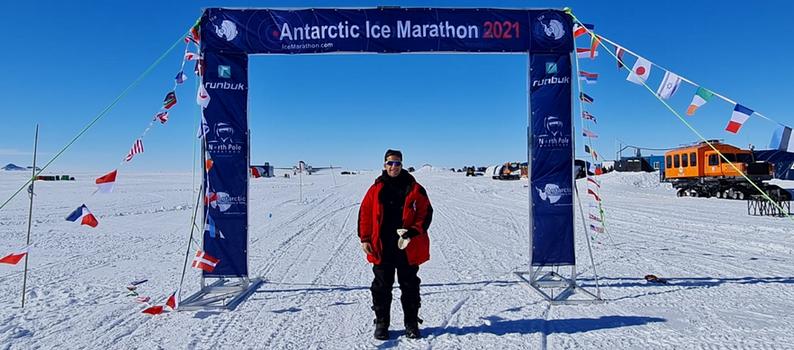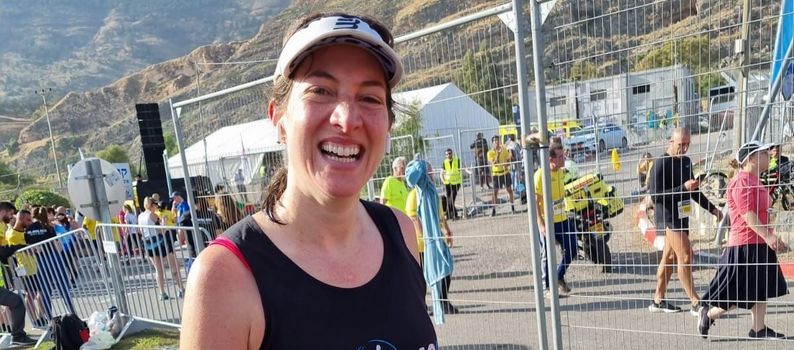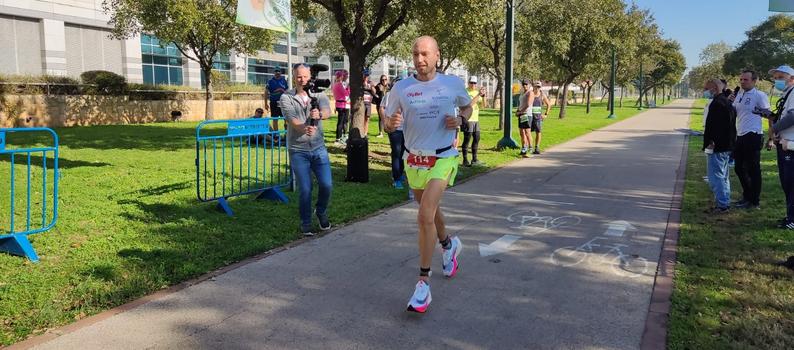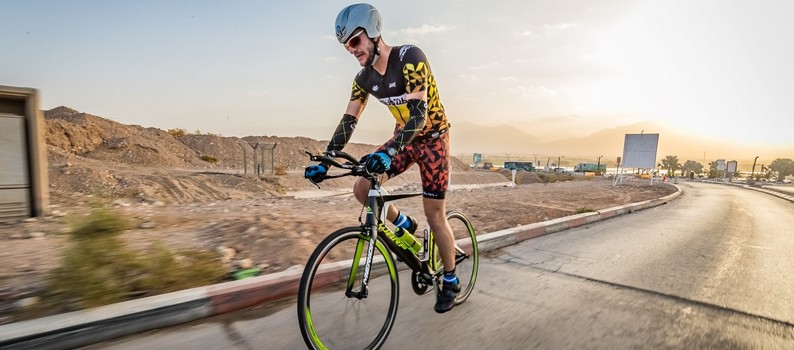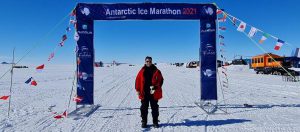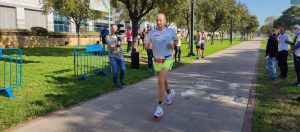By this point you have churned thousands of miles on the bike, your weekend run is longer than the route your friends ride in the woods, and you swim longer distances than a normal person walks daily. You practiced the race day diet, your bike underwent preparation, and this is it – you arrived in Eilat. What now?
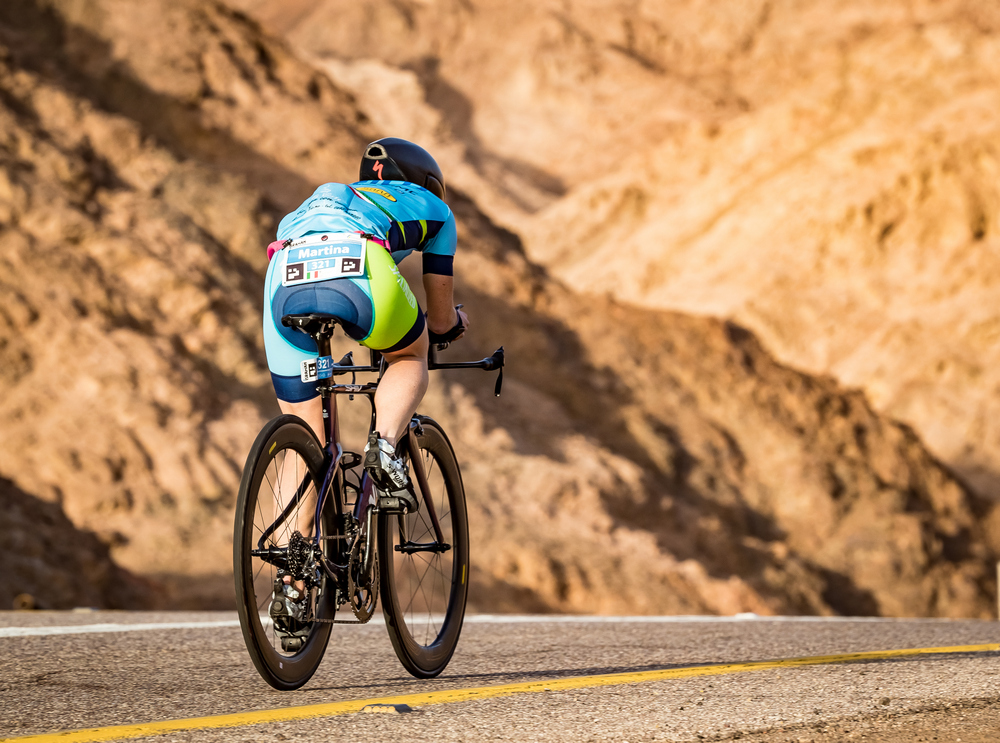
Last tips before starting the journey | Photo: that camera man
The most important thing is not to panic. There are a lot of "do's and don'ts", but the bottom line is that if you've trained according to plan, the training you have done this far is much harder than what you have left, and with a little composure you will no doubt reach the finish line. Start by carefully reading the competition booklet to know what awaits you, and in particular the transition areas. The details change slightly from year to year, and it is important to keep up to date. Also keep an eye on the weather forecast. At Israman, it tends to be unpredictable, and you need to prepare accordingly.
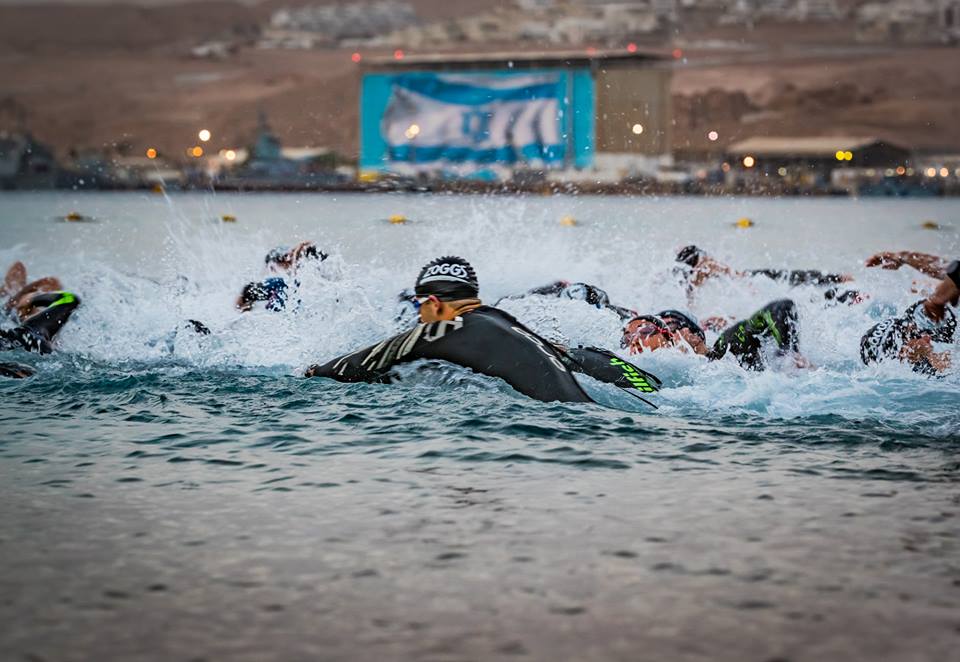
Don’t forget to take care in the swim. | Photo: That camera man
Preparations the nights before:
- Be sure to go to bed early two nights before the race. The preparations and tension will make you lose sleep on the night before the race.
- Complete the registration arrangements early and attend the race briefing if possible.
- Prepare the bags for T1 and T2 and deposit them.
- Park the bike in T1, and make mental notes of landmarks that will help you find your place easily.
- Eat a light, high-carbohydrate dinner.
- Mark the numbers, and go to bed early.
Preparations in the morning:
- Wake up early and eat 2-3 hours before takeoff time. Eat familiar and easy-to-digest foods only (example: banana and bun with jam with a cup of tea / coffee)
- Get on the bike and do one last check. It's time to put the water bottles and the isotonic, make sure the tire pressure and all the equipment on the bike is in place.
Race morning preparations:
- Wake up early and eat 2-3 hours before the start. Eat familiar and easy-to-digest foods only (example: banana and bun with jam with a cup of tea / coffee).
- Get on the bike and do one last check. It's time to place the water and isotonic drink bottles on the bike. Make sure the tire pressure and all the equipment on the bike is in place.
- Drink as usual up to about two hours before the start. Keep sipping as needed. Pee, pee, and then pee again (do not worry, eventually everyone pees in their swimsuit).
- Since Eilat is can be cold in January, most competitors wear the wetsuits at the hotel and forfeit a warm-up run before the start. It is highly recommended to put something disposable on your feet and not go out barefoot. The sand can be painfully cold.
- Jump into the water for a warm-up swim 15-20 minutes before the start. Settle on the starting line about 5 to 10 minutes ahead of time.
- 15 minutes before swimming, drink an isotonic drink – but one that you tried in training. Make sure the drink is diluted enough to avoid stomach discomfort.
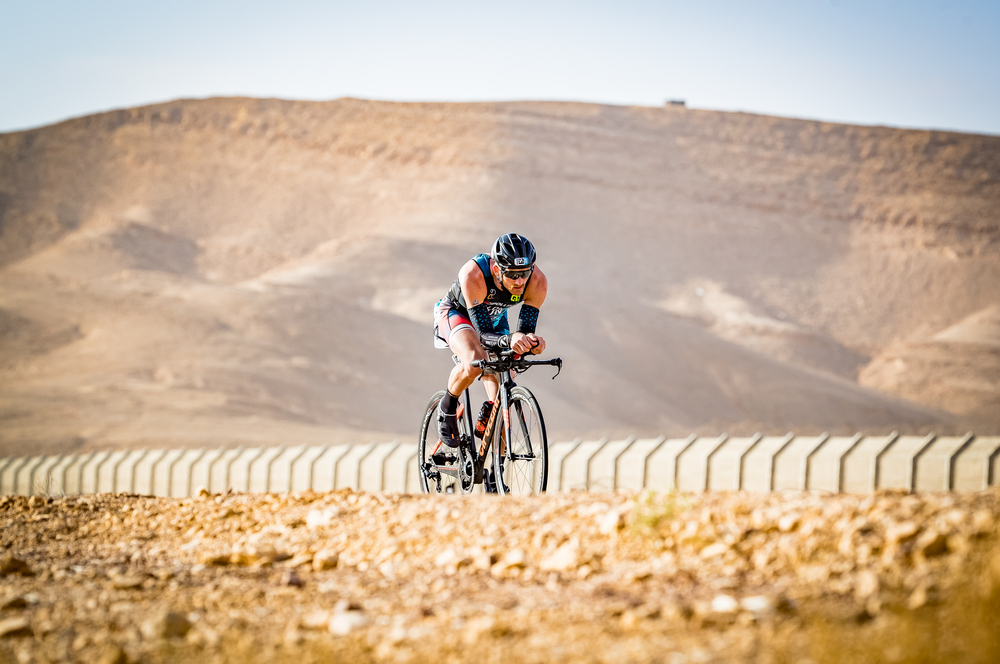
Find a steady and comfortable riding pace | Photo: That camera man
The Swim
- Swim with care – The end result of the swim rarely matters. Use it as a warm-up for the ride. A few minutes faster in swim can cost you dearly later in the day.
- Try to find swimmers with a similar pace to yours and draft on them. Drafting in swimming is allowed and saves time and effort.
The Bike
- The main purpose of cycling is to replace what you lost in swimming and prepare yourself for the run. Usually the first 3-4 hours feel easy. Don't let that deceive you, the difficulty will come later. There is no reward for going hard – neither against other riders nor for the difficult ascents at the beginning of the ride. Let all the crazy ones pass. You will see them later (and if not, they are faster than you anyway). Find a steady and comfortable pace. Stay in an aerodynamic position, drink, eat and focus. Remember that a good and comfortable aerodynamic position is worth a lot in a long race.
- Spending 6 to 8 hours on the bike is a long day, especially if it's cold. Be careful and take more clothes than you think you should, if there cold weather is forecast. Remember that in Eilat there can easily be a gap of 12 degrees centigrade between the temperature on the beach and the temperature in the mountains. If the competition is on a hot day, use sunscreen and clothing that blocks ultraviolet rays.
- If you have a power meter – use it! If not, listen to the pulse meter. Riding by power is the biggest "cheat", and will help you distribute your force in the best way throughout the ride. Using a power meter or pulse meter will help you to avoid exerting on the one hand and prevent you from just dragging your feet on the other.
- Start riding carefully – it takes a few minutes to adjust to the new situation. The first 2.5 km of the ride are flat, followed by about 6 km which lead to about 15 km of difficult the climb to Mount Uzia. Ride the first part of the bike easily in an easy gear and use the flat to rinse your throat with water or a diluted sports drink Don't start eating until your heart rate stabilizes to your normal riding heart rate, but don't linger either – a good time for the first gel is in the plain at the end of the moderate ascents on the Eilat bypass road and before the start of the climb to Netafim. You should feel like you are pedaling lightly on the moderate ascents, and conserve strength even while climbing to Mount Uzia. Again, this is a long day – there will be plenty of time to go hard later.
- Drink isotonic and / or take gels as much as your stomach allows, depending on what you practiced in training. If necessary, especially in extreme weather conditions, separate drinking from eating. Those who take electrolyte tablets, continue to take them as you did in training. If you feel that your stomach is "clogged", adjust the amount of diet / drink to prevent nausea and vomiting later. In a cold race rely more on gels, bars and candies and less on isotonic.
- In a hot race, it is important to keep clothes wet when riding to keep cool.
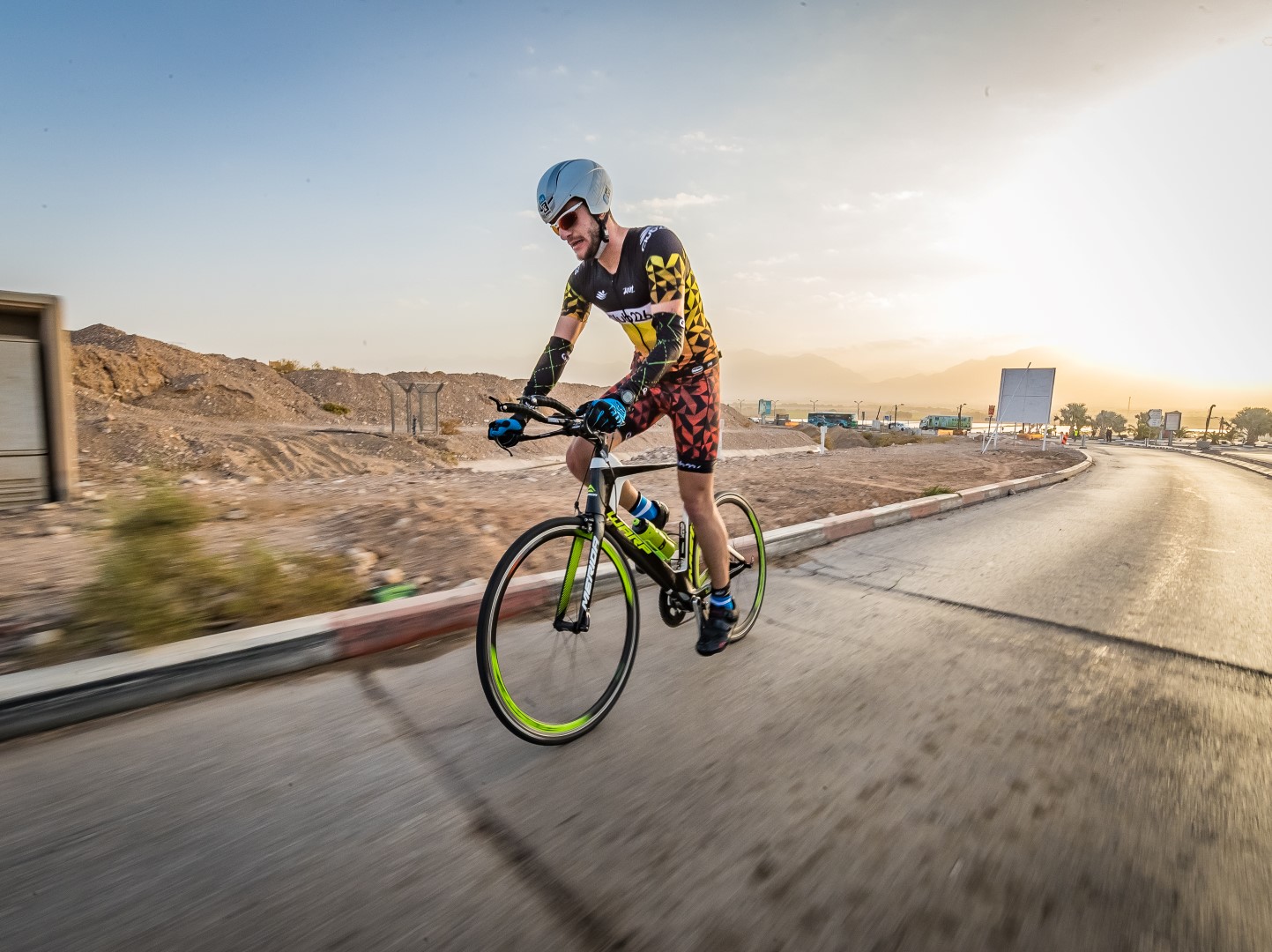
The first part of the bike up to the 24th km is mostly a steep ascent | Photo: that camera man
- Take most of the calories with you and use the feed stations mainly for water. Rely mainly on liquids and gels and less on solid foods. If you have special supplements, make sure you pre-place backups at the feed stations – you will see a lot of supplements that have fallen on the road and ypu do not want to find yourself without your favorite supplement.
- Divide the bike in Israman into four quarters:
– The first part up to the 24th km is a mostly steep ascent. Gel in the flat around the sixth km and another gel in the flat around the 11th km along with isotonic drink will help you start replenishing energy to be used later on.
– The second part up to around 100 kms will take you through the Uvda Valley and back to T2 for the start of the second lap of the bike. Use this part to ride a good uniform effort, and make sure you refuel as much as you can.
– In the third part up to the 150 km area and the beginning of the second ascent to Mount Uzia, you can increase the pace slightly depending on how you feel, and continue to refuel.
– The remaining 30 km of the slight ascent back to Mount Uzia can be used for a strong but controlled ride, and to mentally get organized for T2 and the start of the run. About 10 km from the finish of the bike, it's time for a final dose of energy, to get to the run without an unnecessary load in your stomach.
The Run
- Start the run slowly. Don't go wild for the first few miles even if you have completed the ride excellently. Remember that you have a whole marathon ahead of you. Usually, the abdomen is full of food and water from riding. Often pain is felt in the waist (stitches) as well as a feeling that the legs will never get back to their old selves. Believe in yourself, believe in your training and believe in your legs, and they will work out somewhere between the 3rd and 5th km. At this point do not pay attention to your heart rate, the goal is simply to let the muscles get into the running pace.
- From the 5th km or so, you can start using the pulse to find the right rhythm – do not press hard, but also don't just be drag along.
- The Israman run begins with a long descent. If you have practiced the descents as you should have, you are already experts at utilizing the descent to your advantage. If you have not practiced the descents, let the descent carry you, control the speed with the help of body tilt and avoid braking at every step or your quadriceps will die when you reach Eilat.
- When you arrive at Eilat and start running on the flat, you will occasionally experience difficult parts in which you will feel awful. Believe in yourself and your training and continue through these sections – they will pass in 5 to 10 minutes.
- Drink water and isotonic at feed stations to quench your thirst. If you feel bloated and urinate, reduce your drinking. If you feel bloated and do not urinate, slow down.
- From the middle of the run you can use the Cola in some of the feed stations – there is nothing like Cola to calm the stomach and give a boost of energy. These are the steps where you can also use solid foods like pretzels and bananas that are served at the feed stations.
- Towards the end, about 5 km from the finish line, it's time to give everything left and run for home.
For participants in the half Israman
The principles that guide you are similar. Here, too, the most important thing is not to go wild at the beginning of swim, run and especially not at the beginning of ride and up the first ascent. Relatively speaking, your ride is more difficult and has more climbing per distance. Do not assault the ascents and obey the power / pulse meter.
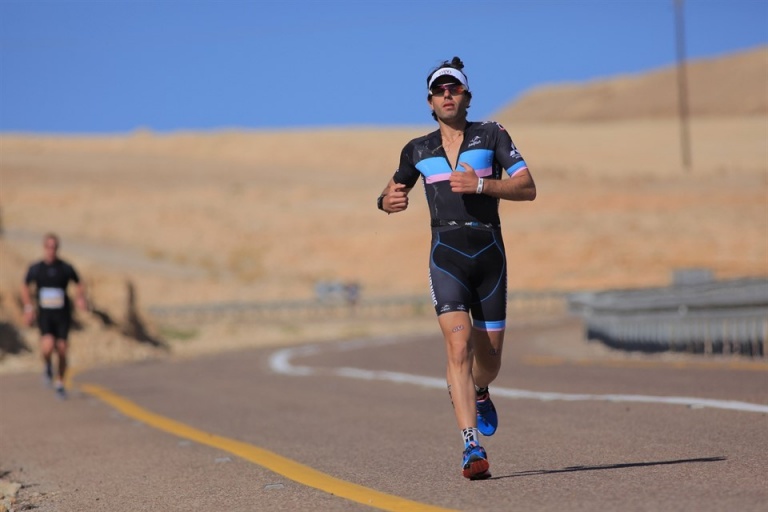
Downhill running should be careful and well managed| Photo: Nir Amos, Israman
On the other hand, in the run, you gain: half of the run is downhill, and if you practice downhill running half of the run is a gift. In fact, from the moment you get off the bike the half Israman participants have only 10 km left after the run descent, along the shores of Eilat to the finish, so you are actually already there. However, do not run wild at the beginning of the run, and let the body gradually get into the rhythm. Otherwise, or there is a danger that you will find yourself vomiting your soul in the first few miles of the run.
- Don't forget that you came to enjoy it… Good luck!
Gear/Kit allocation
Swimming equipment:
Swimsuit or triathlon suit, swimming suit, regular goggles,
Dark goggles (for the sun), a swimming cap (with a number), the competition chip,
your watch, Body Glide, a bright colorful towel, flip-flops/expendable socks.
For the Bike (place in the T1 bag and on the bike):
Bicycle, helmet, cycling shoes, socks (if used)
Riding shirt (if not using a triathlon suit)
Riding shorts / bib (if not wearing a triathlon suit)
Race belt with number, sunglasses, gloves
Water and Isotonic Bottles, Nutrition and Supplements
Tools: 2 Inner tubes, four CO2 canisters or a pump, tire tools, a multi-tool
A floor pump (inflate tires before the start, but leave the pump at T1w in case of need).
For cold weather: arm sleeves, leg sleeves, long riding pants, long riding shirt / coat, closed gloves, thin hat.
For the Run (place in the T2 bag):
Running shoes, socks (if using), pants / tights (if not using a triathlon suit)
Triathlon jersey / shirt (if not using a triathlon suit), hat / sun visor
Sunglasses, gels
For cold weather: long tights, sleeves
Additional recommended kit:
Extra GPS Sport watch and heart rate monitor at appropriate stations
Cable ties, electical tape, pliers
Sunscreen, Vaseline, talcum powder, band aids
Warm clothes to change after the race
Water bottle, recovery drink/snack after the race

